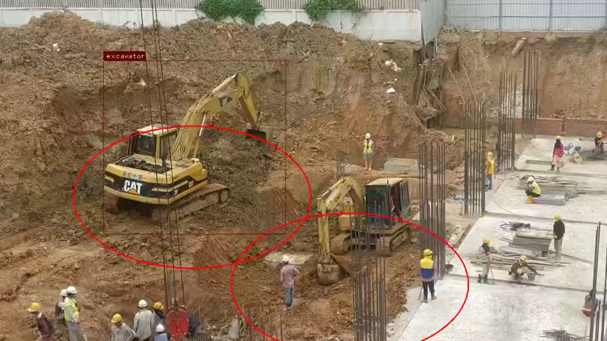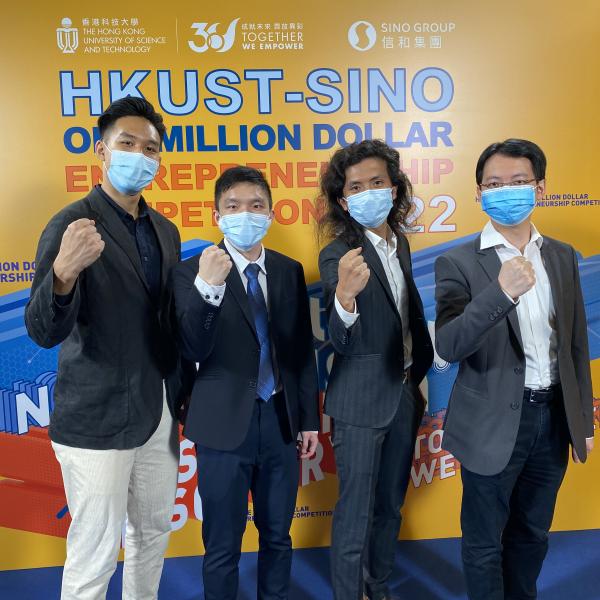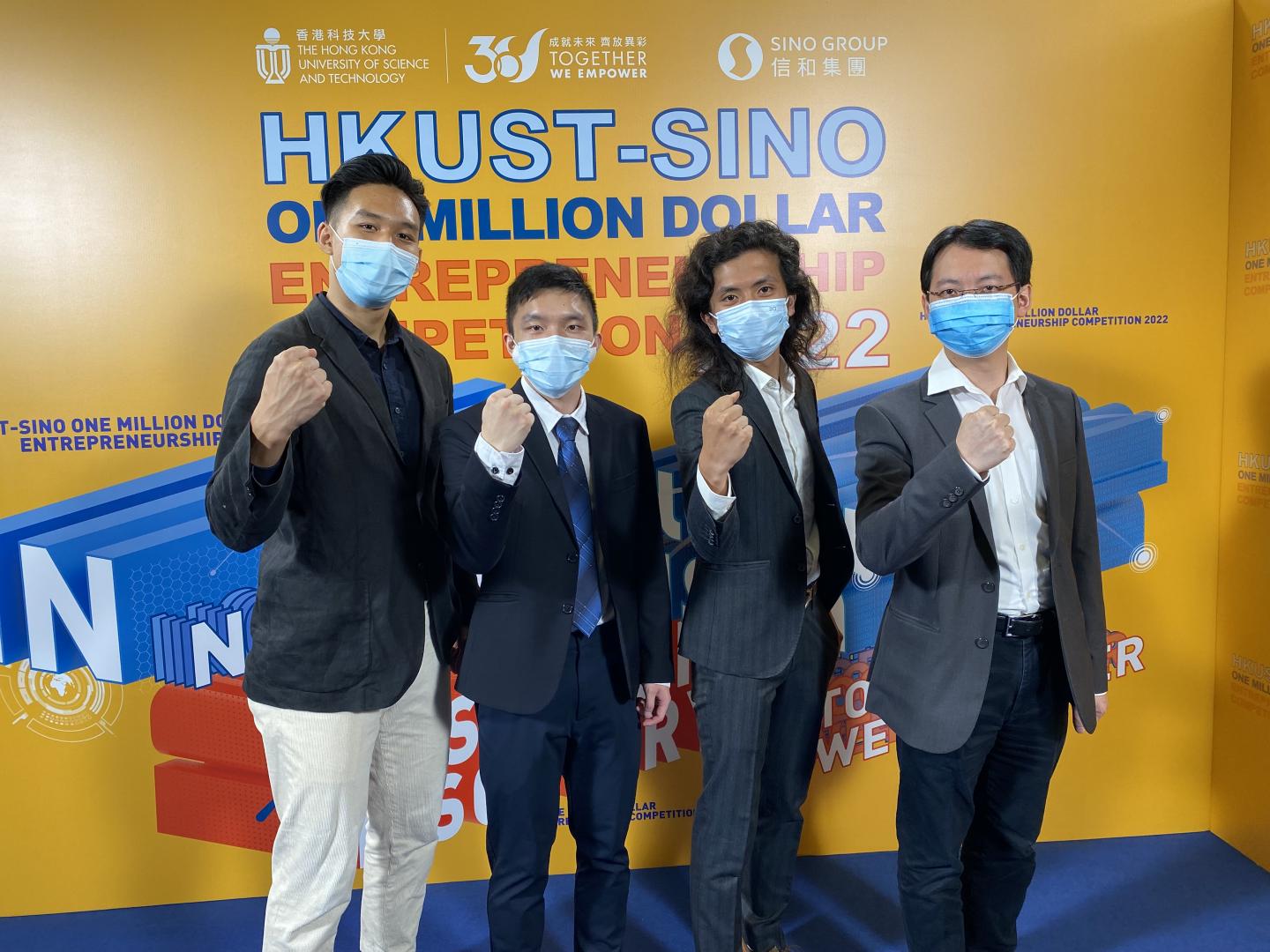AI On the Watch for Worksite Safety
The construction industry, which plays an instrumental role in driving Hong Kong’s economy, has been facing a range of industry-specific challenges including aging workforce, safety incidents, and declining productivity. The adoption of advanced technologies and innovations would help to drive positive change.
Intrigued by the long-standing problems, the winning team of the Sino-HKUST One Million Dollar Entrepreneurship Competition founded AutoSafe, an AI solution company leveraging smart technology to modernize and automate worksite safety monitoring while improving efficiency.
A fatal attraction
The young start-up was founded by Professor Jack CHENG, Associate Head and Professor, Department of Civil and Environmental Engineering, and a team of graduate students. Their solution is an AI-driven construction site monitoring system, where cameras and software are implemented to prevent accidents. The team quickly found a number of partners in the industry in Hong Kong, who were open to adapt their solution.
“30-40% of workplace fatalities come from the construction industry in Hong Kong,” notes Prof. Cheng, quoting statistics from the Labor Department. “While the industry understands the importance of safety measures, the truth is that reliance on the human eye, rather than tech has its limits.”
While existing monitoring tech can do simple tasks such as worker counting, PPE (Personal Protective Equipment) detection, and machine and equipment counting, AutoSafe gains an edge by introducing a dynamic danger zone alert mechanism, a multi-camera worker movement tracking feature, and their integration with the digital works supervision system (DWSS), which are currently missing from their competitors.
“Working around large and heavy machinery comes with potentially deadly risks,” notes Isaac LEUNG, one of the co-founders and currently an MPhil student in civil engineering. “Oftentimes these machines work in a dynamic rather than a static manner, so a pre-defined static danger zone will not be able to follow the movement of machines, and that is where our solution shines. Our Multi-camera tracking system allows efficient collection of walking trajectories from different spots in a construction site, and alert workers who are in close proximity with the heavy equipment. Also, when we can measure the traffic of recognized personnel travelling from one spot to another, we will be able to deduce where heavily-travelled spots are, and where more safety measures are needed.”
“Our AI-recognition model does not rely on facial features, which can cause privacy concerns,” says Peter WONG, one of the co-founders and currently a PhD candidate in civil engineering. “Rather, we are able to deduce the identity of monitored personnel with their clothing, which is just as effective in real world situations.”
In 2020, the Hong Kong government made it a requirement for construction companies to submit reports of accidents and issues to a cloud system, replacing manual logging and submission of such documents. With AutoSafe, this task is made even easier, as statistics of each site is constantly collected and analyzed automatically.
“With safety as the number one concern, our AI camera systems are able to generate reports on number of accidents, missed assignments such as no-helmets/vests, and safety reports, for management of construction sites,” says Peter. “Current practice requires supervisors and safety officers to visit sites physically to reinforce rules, but with our help, they no longer need to—our AI cameras are always watching, 24/7.”
As AI monitoring is real time, it also allows immediately triggering of useful alerts, such as raising an alarm on site, firing out instant message and email alerts, all at the moment when a potential safety hazard is observed and identified.
The innovation has made the team champion of the 2022 HKUST-Sino One Million Dollar Entrepreneurship Competition and an awardee of the Lo Kwee Seong TECH-Ship Fund, and the start-up is set to enter the Hong Kong Science Park as an incubation company this year. The proprietary system has attracted the attention from potential users such as the Drainage Services Department, a major construction contractor, and a large real estate developer in the Mainland.
With a steady pipeline of infrastructure projects set to take place in Hong Kong for the next 10 years, the need for AI-empowered safety tech can go only go up—an opportunity AutoSafe is not overlooking.
“From Lantau Tomorrow to the Northern Metropolis Development Strategy, billions of dollars are going to be invested in infrastructure-related construction work in Hong Kong,” says Prof. Cheng. “When we take into consideration that an average of 0.5-2% of capital investment is spent on safety for a construction project, the room for growth is unlimited.”
Go for It
While the outlook of the construction industry may look bright, the team understands they can’t take anything for granted, given how the world we once knew has changed much since the pandemic began two and a half years ago.
“We are not stopping here,” says Issac. “The team is developing more smart site solutions to our ecosystem, ranging from IoT devices to robotics. Also, we need better marketing, better presentation skills, and more confidence for our business to succeed. Luckily, we got plenty of support here at HKUST, which we are truly thankful for. We took finance classes, business and IP workshops, accounting classes, pitching practices, among many others. Even the company logo was designed by myself,” says Issac.
After spending more than a decade at HKUST as an outstanding researcher and educator, Prof. Cheng sees there is a need for those involved in the academia to be more proactive in knowledge transfer and bridging the gap.
“Before AutoSafe, I have seen many students come and go, where they would put forward very interesting ideas in research and papers, only to see their work came to an end when they graduated,” notes Prof. Cheng. “I cannot help but think, what if we take the initiative and turn those ideas into real solutions for industries? There is really no need for any innovation to ‘feel ready’ before deployment. Go for it—is what I would tell my students today.”
“The best time is now,” says Isaac. “The market will not wait for some ideas to be fully ready. Starting a company is very tiring compared to working a desk job and getting a stable income, especially since we are so small in size and have so much more to learn. We have future plans to go into IoT and more, but first, we have to start right now, at this very moment.”




